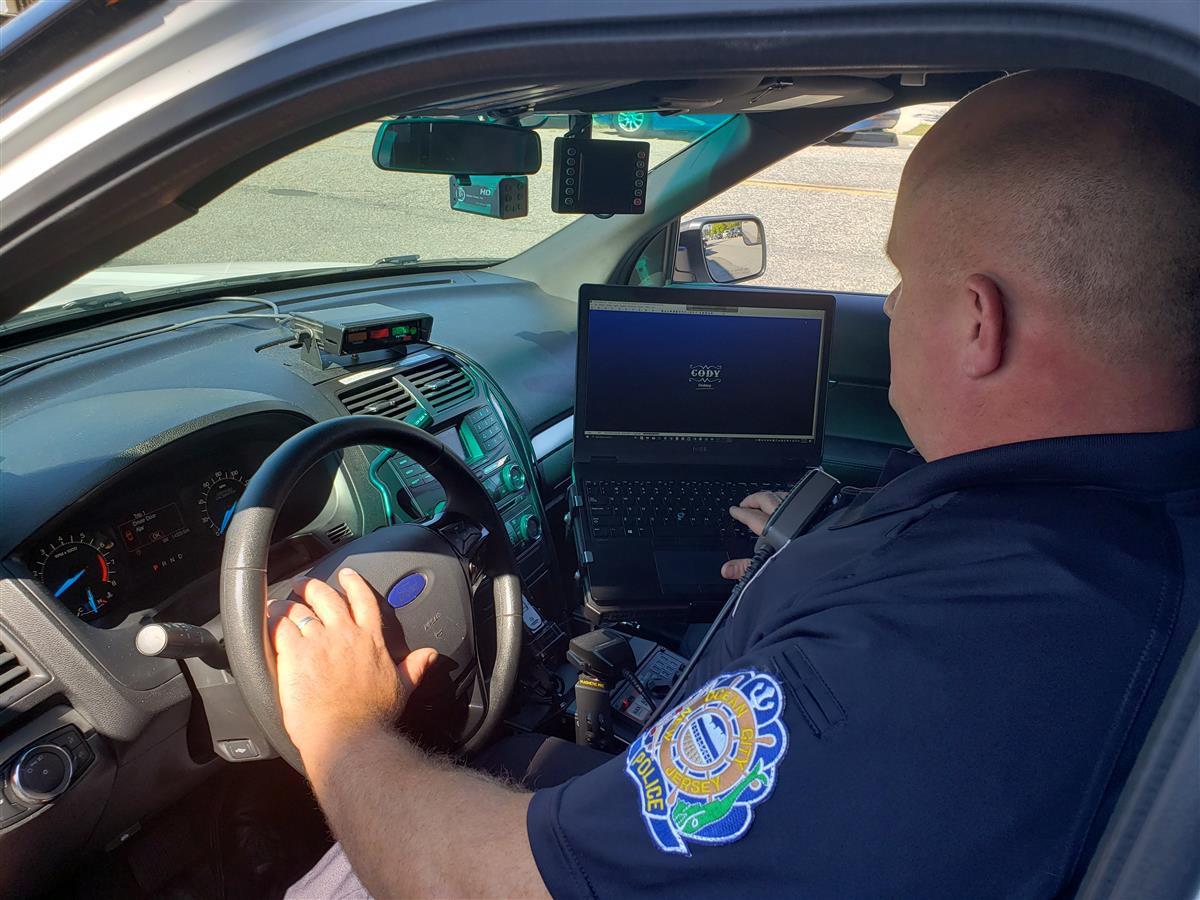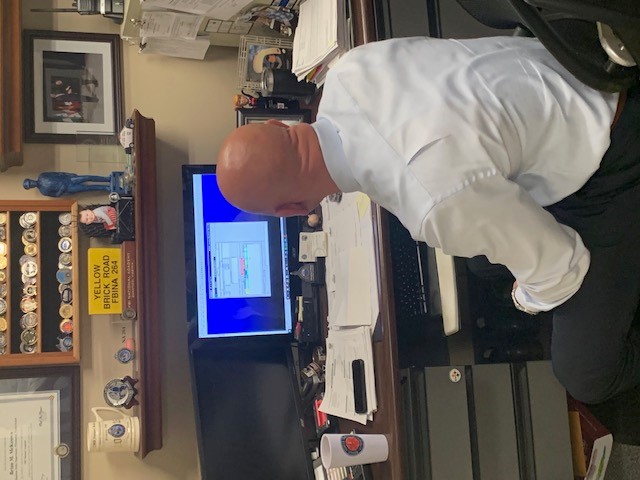 Intelligence-led Policing Starts with an Intelligent RMS
Intelligence-led Policing Starts with an Intelligent RMS
How 3 FBINAA graduates have used CODY RMS to make their agencies smarter, more proactive, and more data-driven
In the 21st Century, intelligence underpins the daily actions of every local and county law enforcement organization. For most local law enforcement agencies, the primary source of information to help make informed decisions is the agency's own records management system (RMS). But, nearly two full decades into the 21st Century, many local law enforcement agencies are still struggling with RMS systems that have not ‘kept up with the times’.

While they may do an adequate job of producing required reports and statistics, these legacy RMS systems lock the information - and the intelligence it can generate - away from the very people who provide that information in the first place, and who rely on it to do their job.
With the focus of this issue of the FBINAA Associate Magazine on Intelligence, the chiefs and other command staff from three police departments - all past or future Academy participants - describe how their RMS has helped them become and remain truly intelligence-led law enforcement agencies.
Getting good data; Capturing the right data
Being able to get good intelligence out means first putting good data in. Whether in the patrol car on scene or in the office, it starts with patrol completing incident reports thoroughly and accurately. The need for this will come into even more sharp focus as agencies across the country begin to transition from summary reporting to the more robust data needs of National Incident Based Reporting System (NIBRS). Upper Moreland (PA) Police Department Chief Michael Murphy (FBINAA 183) stresses the need to "take time to make sure it's good information. The results will benefit you later when you want to mine that data."
That means making data entry simple and efficient, eliminating redundant data entry, and not requiring a user to jump back and forth between multiple screens. By incorporating all of the data elements the system needs for an incident report into a single, logically organized screen, for example, the intelligent RMS can save the officer time and eliminate the frustration which might result in potentially-critical information not being entered. With the right data, the RMS will automatically open an incident report and populate and update all of the relevant system records, including master name, vehicle and property - all without user intervention – and will create links between these entities to inform investigations later on.
Chief Ken Truver (FBINAA 225) and Lieutenant Brian McKeown (FBINAA 264) of the Castle Shannon (PA) Police Department both emphasize how important it is to have the intelligent RMS capture the right data in the first place. Case in point: with an increase in theft of motor vehicles a few years ago, the department wanted to be able to track those more carefully. By creating a new ‘incident type’ code and adding a ‘theft of auto’ to the drop down box list of incident types, a simple click now captures that information for future search and reporting. "I can quickly go back over the last year and pull up every theft of a motor vehicle," says Chief Truver. Users of the CODY Systems’ RMS Anywhere, Chief Truver and users at the department enjoy the ability to modify the system this way on their own rather than having to contract a vendor for these changes. CODY RMS "is highly tailorable to the specific agency and its needs," adds Lieutenant McKeown. "That's what I like."
The intelligent RMS will also eliminate duplicate data entry wherever possible. After a traffic accident, says Chief Truver, "we used to have to do two separate reports - one for the state crash and citation system and one for the RMS." However, CODY built an interface between these two systems so "now it's one-stop," with data entered once in our RMS and the relevant data automatically sent to the state. That's what technology is supposed to do, Chief Truver believes. "If it's not easier for my staff, I'm not interested."
Data transformed into actionable intel
 While ease of data entry is certainly a key first step, the real ‘magic’ of an intelligent RMS is its ability to inherently link any and all of the record data in the system - on persons, addresses and vehicles, for example - so that potentially relevant information can be cross-referenced and used agency-wide. These links between records will allow a user (with the right credentials) to search for and retrieve any piece of information previously entered, while providing the data foundation for searching and reporting to make it easy to hone in on the right information.
While ease of data entry is certainly a key first step, the real ‘magic’ of an intelligent RMS is its ability to inherently link any and all of the record data in the system - on persons, addresses and vehicles, for example - so that potentially relevant information can be cross-referenced and used agency-wide. These links between records will allow a user (with the right credentials) to search for and retrieve any piece of information previously entered, while providing the data foundation for searching and reporting to make it easy to hone in on the right information.
With the right RMS data foundation in place, intelligence-led policing doesn’t need to start at the top and be pushed down through the ranks – it can start right with the individual officer on the street. In fact, with the data they have available from the CODY Anywhere RMS, Upper Moreland Police Department patrol squads can make their own decisions on when and where to focus. "We give our officers the autonomy to direct their response based on the information they get," says Chief Murphy. Because there's solid data behind it, "I have faith in them." If a data search shows a certain time of day or day of week pattern in an incident type, for example, they can adjust their patrol schedules in response. As a result, resources can be applied more proactively and more quickly.
The intel the data is showing them, then, supplements the intelligence gathering that goes on at the command level. "Through our RMS, I review incidents every day," says Chief Murphy. "If I see something that looks like a trend, as we did recently with theft from vehicles, we use the data to put out intelligence bulletins to establish directed patrol." Every week, he gets an automatically-generated, custom report on specific crimes that he wants to "keep an eye on," including burglaries, aggravated assaults and thefts. Then, while still within his RMS, Chief Murphy, “can go right down to the original reports to see if we need to address an issue directly."
Digging Deeper
Most legacy RMS solutions allow some level of search, but how deep into the data that search can go makes all the difference. A legacy RMS might support  a search against a specific suspect name and show known associates linked directly to that individual in prior incident reports. An intelligent RMS search, however, will go far beyond that.
a search against a specific suspect name and show known associates linked directly to that individual in prior incident reports. An intelligent RMS search, however, will go far beyond that.
"Searchability is crucial to us," maintains Castle Shannon Lieutenant McKeown. “In our RMS, we can search everything." That includes incident report factors, like method of entry in a burglary, that can link incidents, establish patterns and solve crimes. You can even search incident narrative comments and other "free form" text.
One type of search that allows users to ‘dig deeper’ is the Statement Search capability found in CODY RMS. Using this data-mining tool, users can actually build the search ‘statement’ themselves. Because they're all linked in the database, the search can involve multiple record types or tables, such as incidents, persons, addresses, and vehicles. A search might, for example, look for incidents between a certain date range, where a white male with brown hair was involved, and a red car was involved. Plus, these searches can be saved and run over and over again. "I rely on the Statement Search capability all the time," says Chief Murphy of the Upper Moreland Police Department. "There's no limit to what you can search on, and I'm impressed with how detailed and accurate it is."
Lieutenant Stephen Schaffer, Director of Police Communications for the Ocean City (NJ) Police Department and an enrollee in the January 2020 FBINAA session, points specifically to the Fielded Search capability, where a module’s fields are presented for the user to fill in specific search criteria.
"Your search can be as wide or as narrow as you want it to be," says Lieutenant Schaffer. In searching incidents, for example, you can use just a few fields in your search, such as incident type and location, and get potentially hundreds of matches, which might be useful for planning and allocating resources, or enter 20 different fields and drill down to the two or three matches useful for a specific investigation.
Beyond RMS
Querying data and pulling reports are vital, but intelligence-led policing demands even more. The intelligent RMS provides powerful tools for investigators, as well as gang and drug units and other specialized teams that need to drill down even deeper to uncover and display patterns in the data. To meet this need, users of the CODY RMS also have at their fingertips a Data Visualizer that studies the data (and the links between entities in the system) and generates inferential patterns; resulting association webs are presented in different visual link-analysis formats including link trees, charts, and graphs.
The increasing demand for housing ‘non-RMS’ information has also become critical. Law enforcement agencies are increasingly finding useful incident-related information - including text, video and images - on social media. The intelligent RMS must be able to retain this information in a way that can be easily searched and linked to relevant incidents, persons and cases.
Castle Shannon Lieutenant McKeown notes that "investigation-wise, the ability to not have to warehouse that information (separately), but to just attach it digitally to the record and bring it up when needed, brings a lot of value to us."
Even where information, such as in-car and body worn camera video relevant to an incident or case, is stored separately, having a searchable reference in the RMS will make it easier to find. Ocean City Police Department detectives "go to CODY first to see if there is a reference," according to Chief Prettyman.
Getting There from Here: Lessons Learned
A key consideration in deciding to switch to an intelligent RMS is the conversion of data from the legacy RMS. And here it's less about the technical competencies of the RMS provider and more about its understanding and commitment. The provider of an intelligent RMS understands that any piece of data in the legacy system - however dated - may be critical to building associations in a new case, so every possible record should be converted. The Castle Shannon Police Department recognized the importance of retaining its data when it converted twenty-five years of data from its legacy RMS . 'You don't want to lose any data," says Chief Truver. When a new case involves someone you've dealt with before, "you don't know what you don't know," if the old data hasn't been migrated to the new system.
The conversion and migration process went off "without a hitch" he added. Lieutenant McKeown, who was directly involved in the process, recalls that "I can't think of a single piece of information that we lost during the transition; if there wasn't a place to put it, CODY found a place. It would have been easy to say 'We can't do that'; but they found a way to make it work."
Upper Moreland Chief Murphy offers this advice to a department considering replacement of its legacy RMS: "Don't look for just the least expensive solution; look for the one that will make your department the most productive." Recently, his department participated in the evaluation of some other RMS packages being considered as part of a county-wide procurement. But after evaluating the candidate systems, he says, his staff recommended "that we need to stay with our RMS." That's because, he says, "it's stable and it’s reliable." Citing the interface with the statewide crash and citations system and other enhancements, the Chief adds that, “we’re lucky to have an RMS company that is always receptive to ideas on how to improve their solutions and working with you to accommodate what you're looking for."
It all starts with Intelligent Leadership
Not all intelligence comes from systems and data. The knowledge and experience of peers can be important - in solving an individual case or in making the right strategic decision for the agency.
"The network connections you build through the Academy will open doors," says Castle Shannon Chief Truver , who currently serves as the 2nd Vice President of the FBINAA.
With soon-to-be four command level staff as graduates of the Academy, Ocean City Police Department has made a strong commitment to the organization. To Chief Prettyman, the benefits of being able to "reach out and communicate with colleagues around the country are indescribable."
Upper Moreland Chief Murphy attended the Academy 24 years ago. But, he says, "even today, if one of my people handling a case came and asked if I knew someone in a certain agency who could help them, I can go to the Academy website (to get contacts). Even if I don't know them personally, other Academy grads will bend over backwards to help you. That's the long-standing uniqueness of the organization."
